Since gaining promotion in 2019, Lincoln City FC has established itself as an EFL League One club.
With an average squad age of 24.3 years old, the team boasts one of the youngest lineups in the league.
The Imps have directed their transfer focus towards acquiring young talents, exemplified by the signings of 21-year-old Irish winger Dylan Duffy and 22-year-old Scottish midfielder Ethan Erhahon.
Furthermore, young defender TJ Eyoma joined from Tottenham Hotspur in 2021 following a successful loan spell.
The club doesn’t merely acquire young players for the first team; instead, it is more committed than ever to nurturing its own talent.
While securing their position as a League One club, Lincoln has concentrated on providing ample resources to its highly regarded academy system, ensuring it can effectively develop players for the first team as they look to build towards promotion to the Championship.
Although youth development hasn’t always been top of the agenda, in the past, several former Lincoln City youth players successfully transitioned to professional careers.
Notable individuals like Jack Hobbs, who enjoyed a prominent career as a central defender, including signing with Liverpool at the age of 17 after graduating from The Imps’ youth system.
In this tactical analysis and Lincoln City scout report, we will highlight two young attacking players whom we think The Imps can look to build around in the future.
We will assess how they fit into the tactics of the youth team and analyse the critical aspects of each player’s style of play.
Bailey Adamson
The first player we are going to look at in this analysis is 17-year-old forward Bailey Adamson.
The young striker typically plays in the front two of Lincoln City U18’s 4-4-2 system or as the lone centre forward in a 4-2-3-1.
He is somewhat reminiscent of a typical number nine in the sense that he prefers to work in more central areas rather than drifting out into the channels.
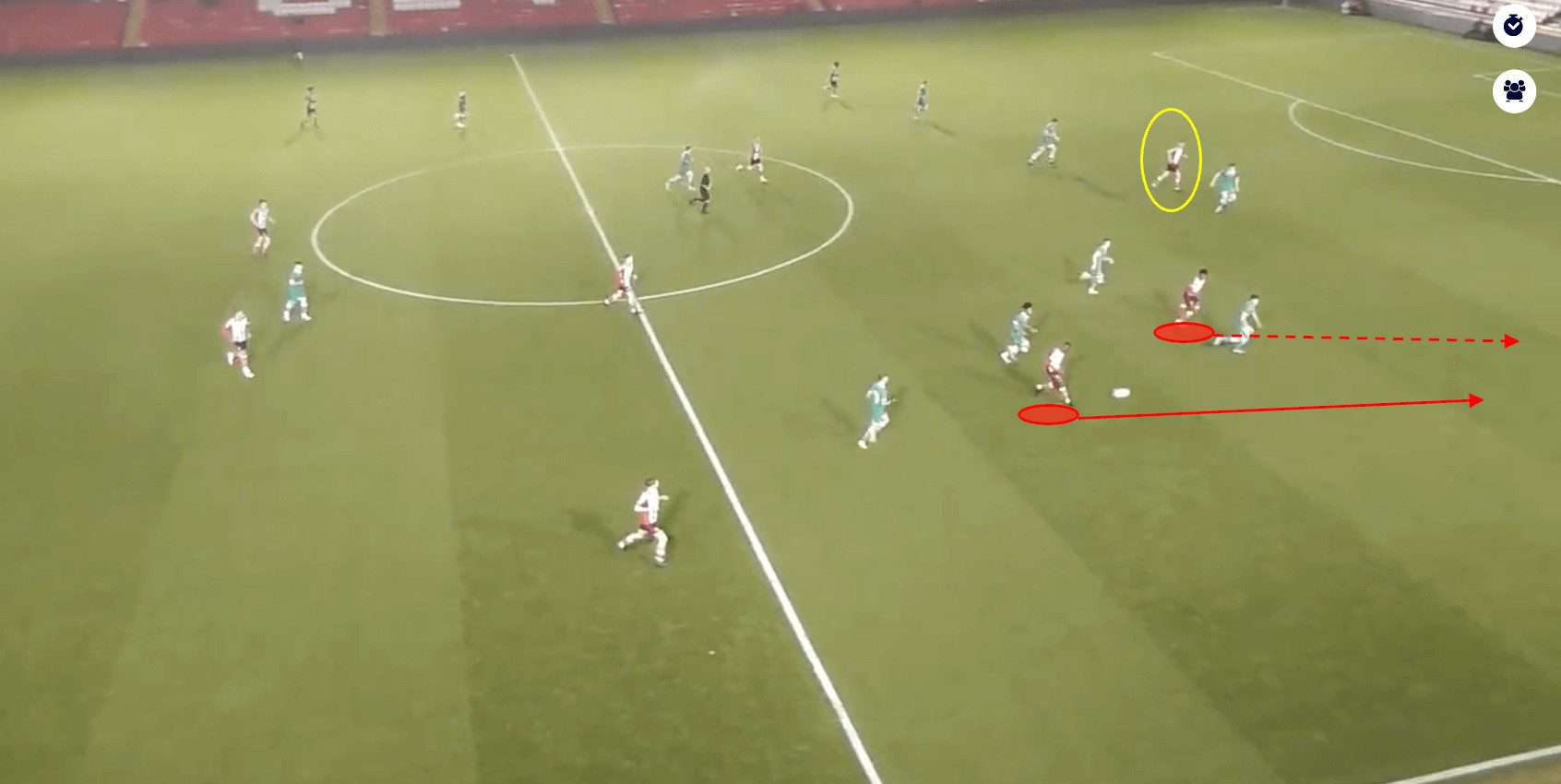
The ability to make well-timed runs off the shoulder of the last defender is incredibly useful.
By doing so, Adamson has the opportunity to exploit the defensive line’s positioning.
This dynamic movement stretches the defence, as we can see above, and capitalises on the element of surprise, giving Lincoln City a strategic advantage.
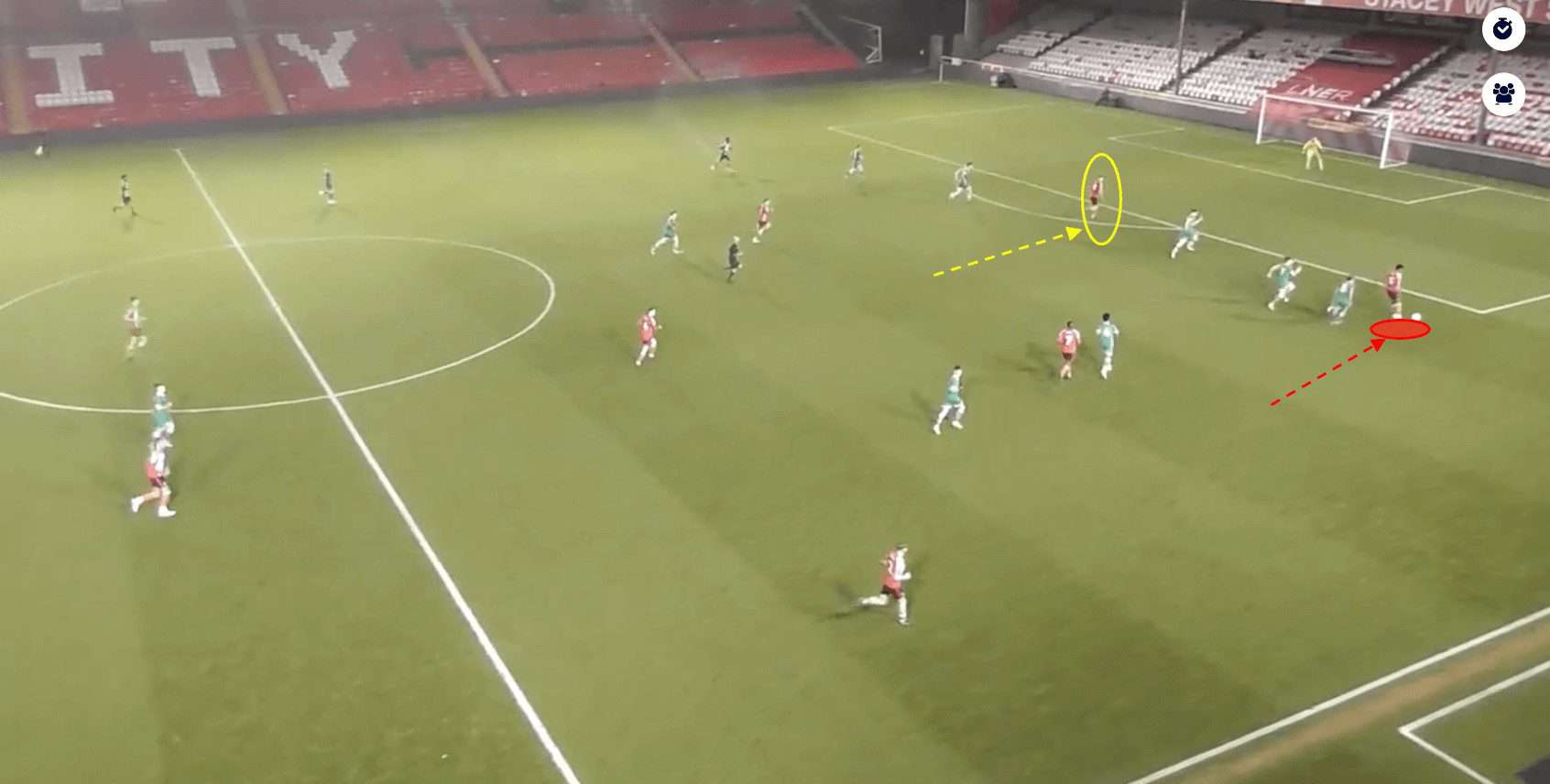
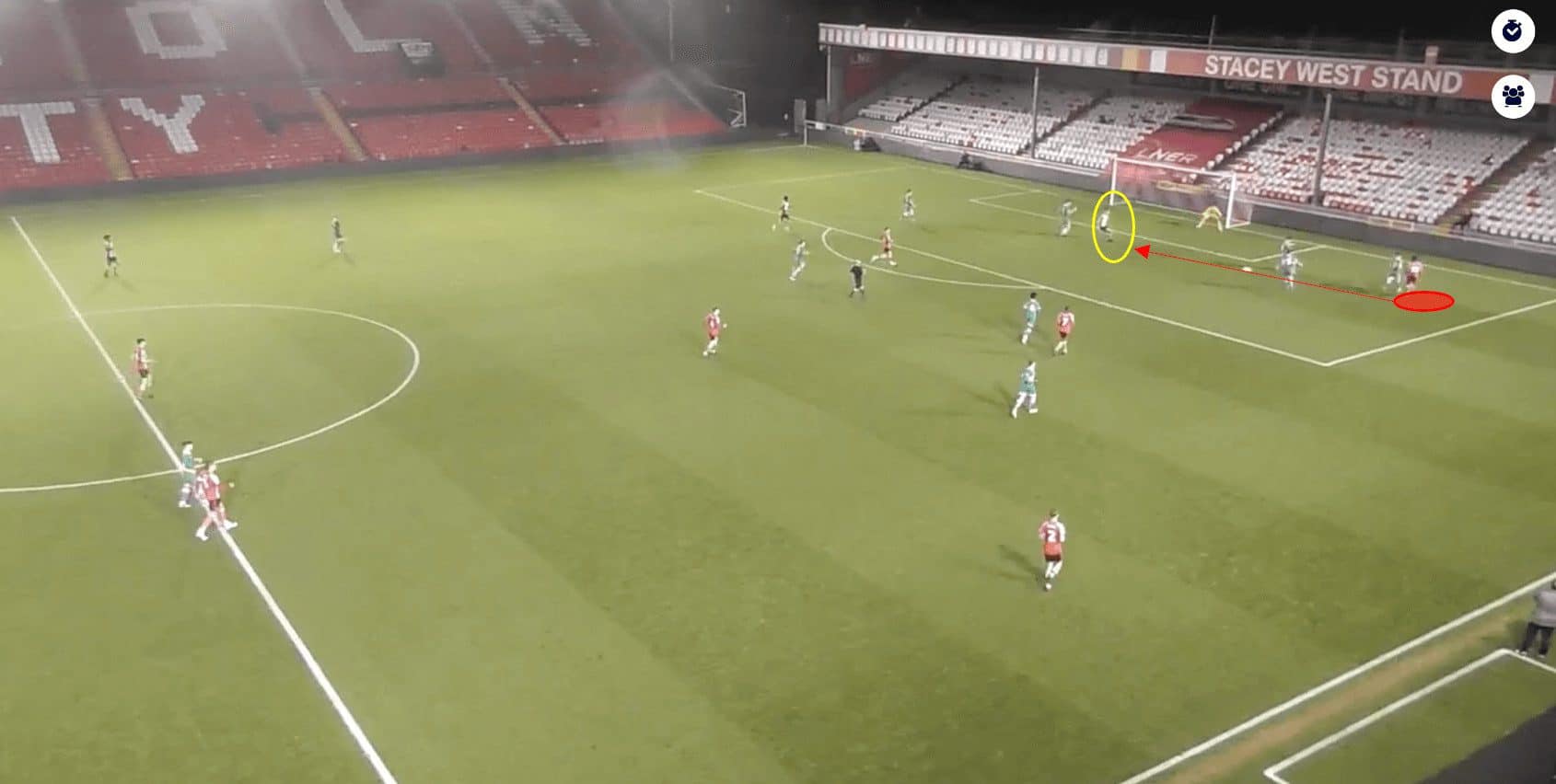
Adamson’s constant willingness to run in behind the defensive line forces defenders to backtrack and second-guess their positioning.
As a result, it disrupts the defensive organisation, creating gaps and vulnerabilities that Adamson or his teammates can exploit via through balls and precise passes.
We can see in this example that as the forward makes his run and forces the opposition back, Lincoln attacks down the right and a cross is driven into the feet of Adamson, who can get a shot on goal due to the excess space he finds himself in.
The young forward gets into excellent positions in the area and currently averages 3.9 shots per 90, with 1.8 per 90 being on target.
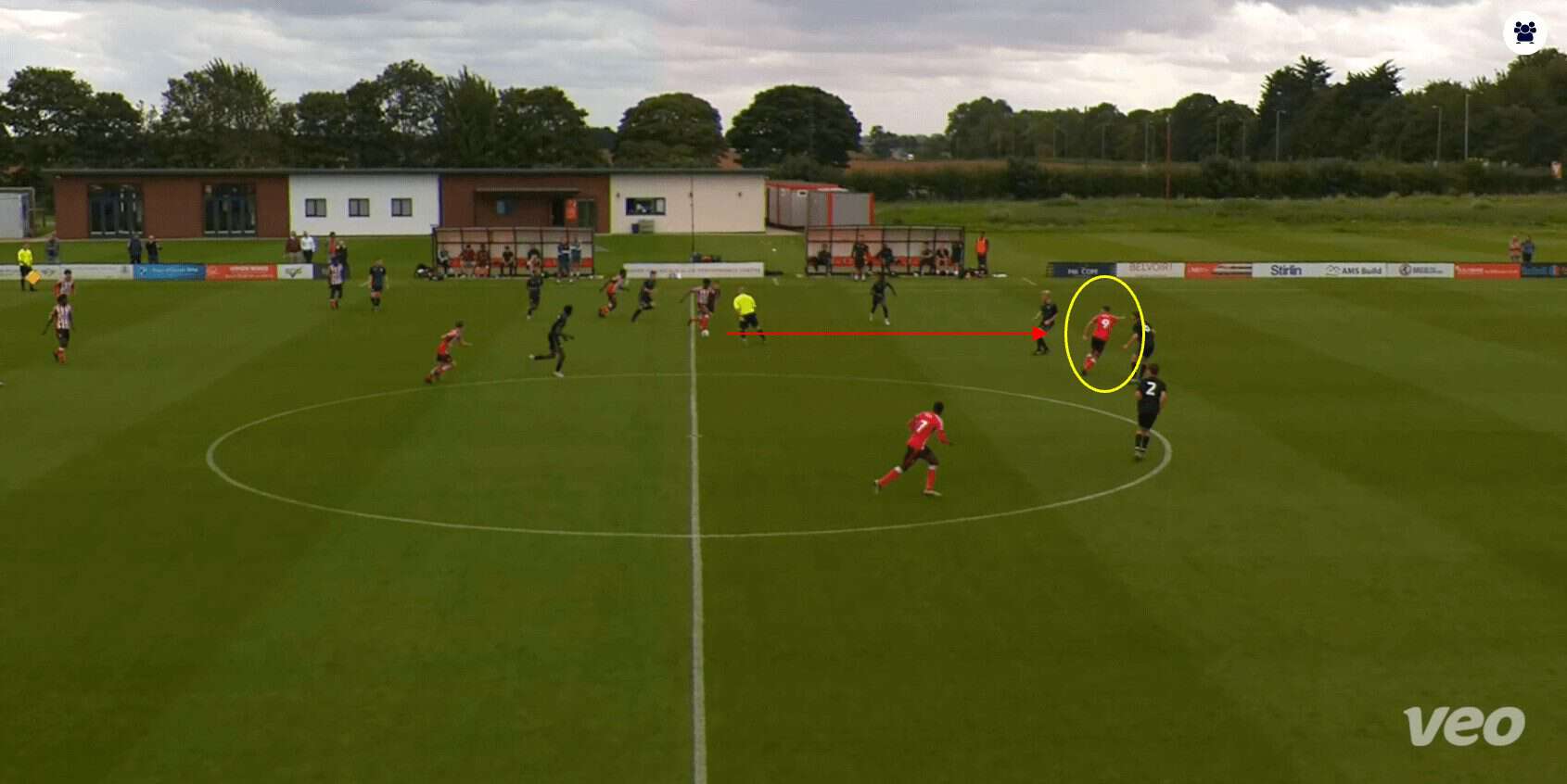
Here, we can see Adamson pointing to where he wants the ball to be played.
He times his runs very well and manages to stay onside.
His movement off the shoulder of the last defender contributes significantly to goal-scoring opportunities.
By timing these runs to perfection, he puts himself in prime positions to latch onto these through balls from teammates.
In this scenario, he goes through 1v1 with the goalkeeper and scores a well-placed shot into the far corner.
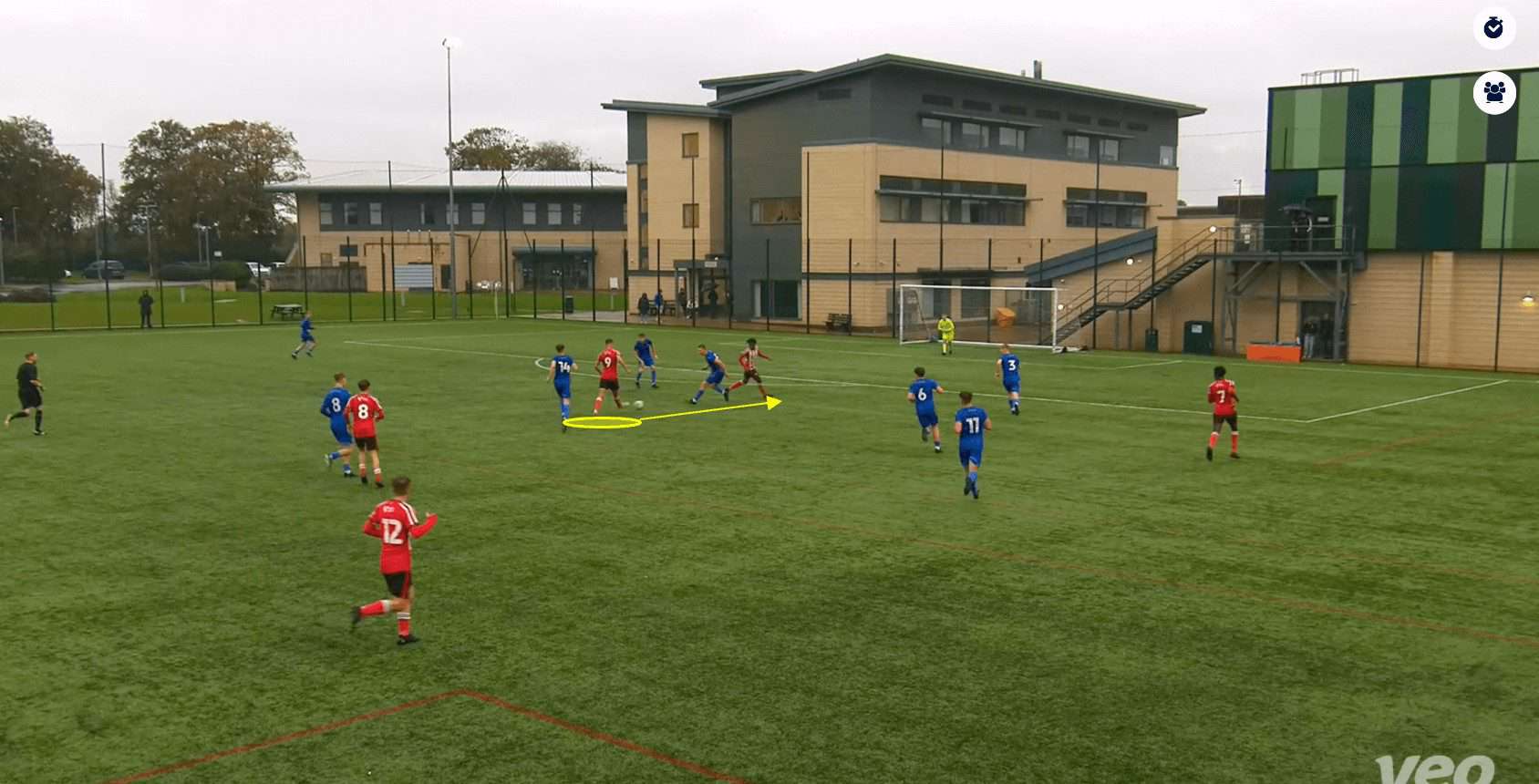
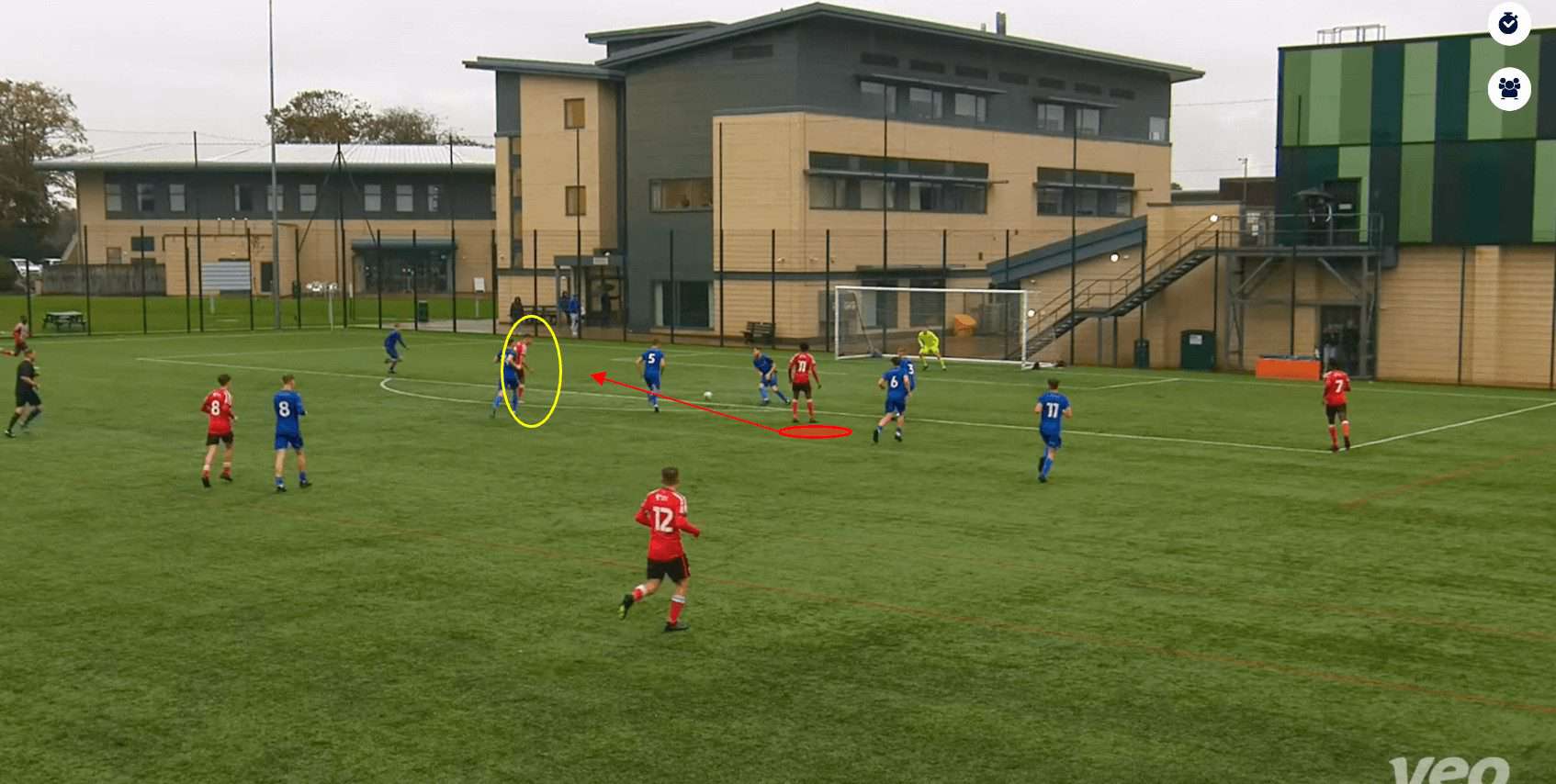
The Lincoln City striker is also able to link up well with his teammates and play short, intricate passes that allow them to work through the opposition’s defence.
In this instance, he controls the ball well and plays a short pass into the path of his teammate.
Adamson doesn’t rest on his laurels; he showcases his good off-the-ball movement by making a run into the penalty area, utilising a good burst of acceleration to get ahead of his opponent.
This means he is on hand to have a shot on goal when his teammate plays the ball back to him.
Linking up play allows the Lincoln striker to engage with his teammates in the build-up phase, which creates a cohesive attacking unit.
He becomes a pivotal intermediary between the midfield and forward lines by dropping into pockets of space and receiving short passes.
This connection facilitates good ball circulation, helping the team progress through the field with controlled possession.
Moreover, Adamson’s ability to play short passes also disrupts the opposition’s defensive shape.
He forces defenders to make decisions – whether to press and close him down or hold their positions.
This often opens up gaps and creates spaces that can be exploited by other attacking players making runs into advanced positions.
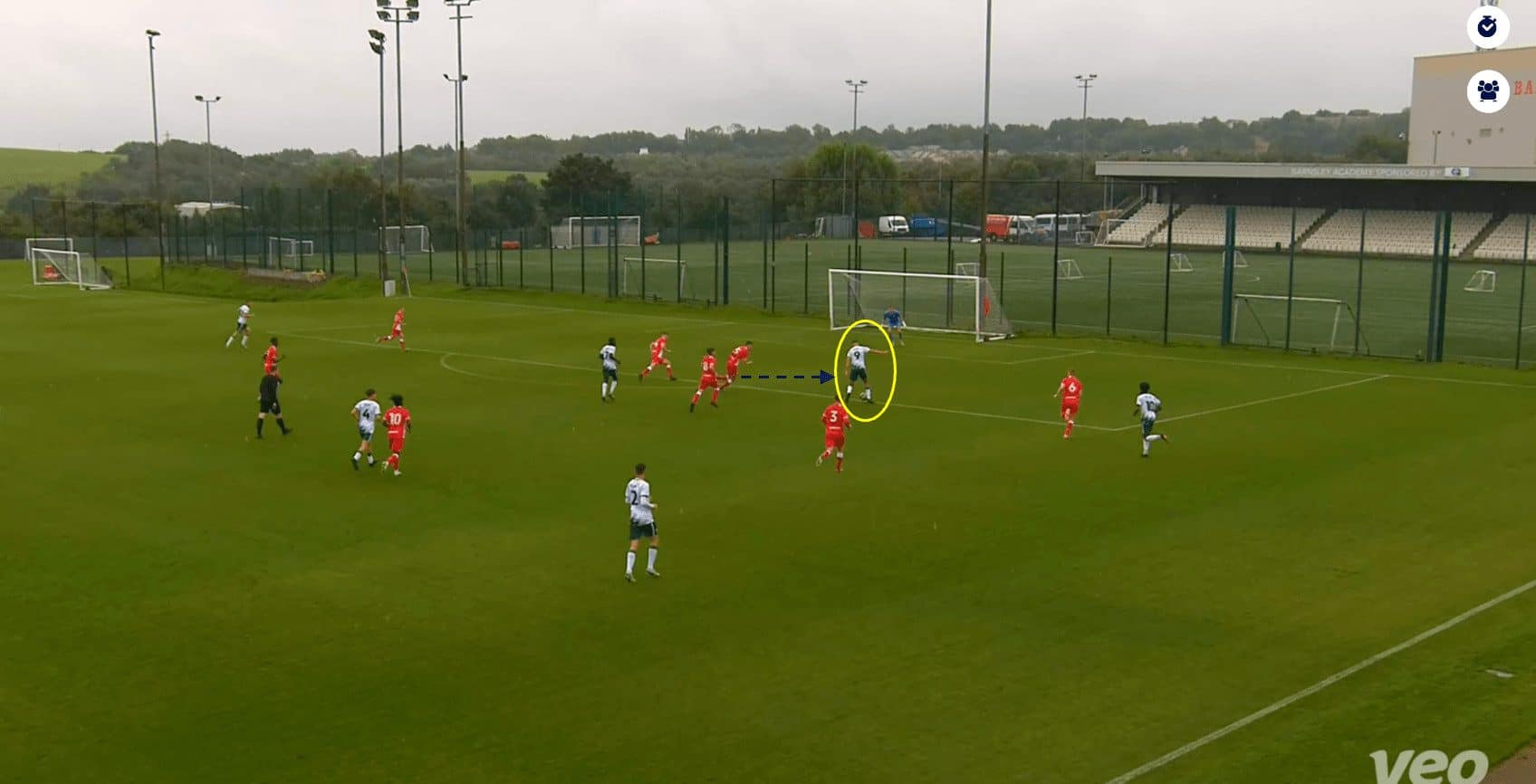
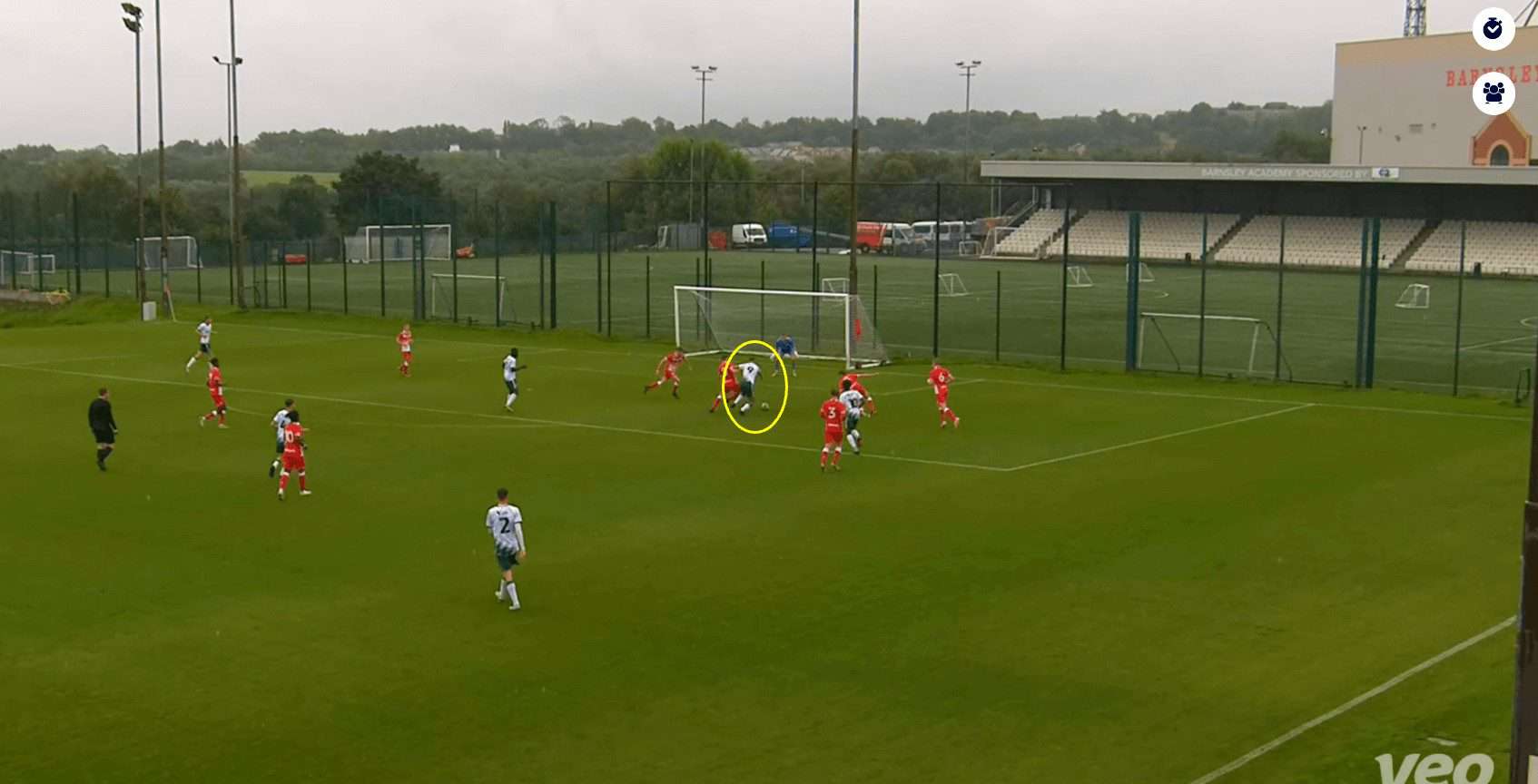
Furthermore, The 17-year-old shows good physical strength in the opposition area to hold off his opponent.
He has very quick feet and can shift the ball to evade the opposition players.
Adamson frequently demonstrates his ability to manipulate the ball deftly, allowing him to navigate through congested defensive lines, dribble past opponents, and maintain possession in tight situations like the one above.
This close control becomes particularly crucial when receiving passes in crowded spaces, enabling him to shield the ball effectively and create goal-scoring opportunities.
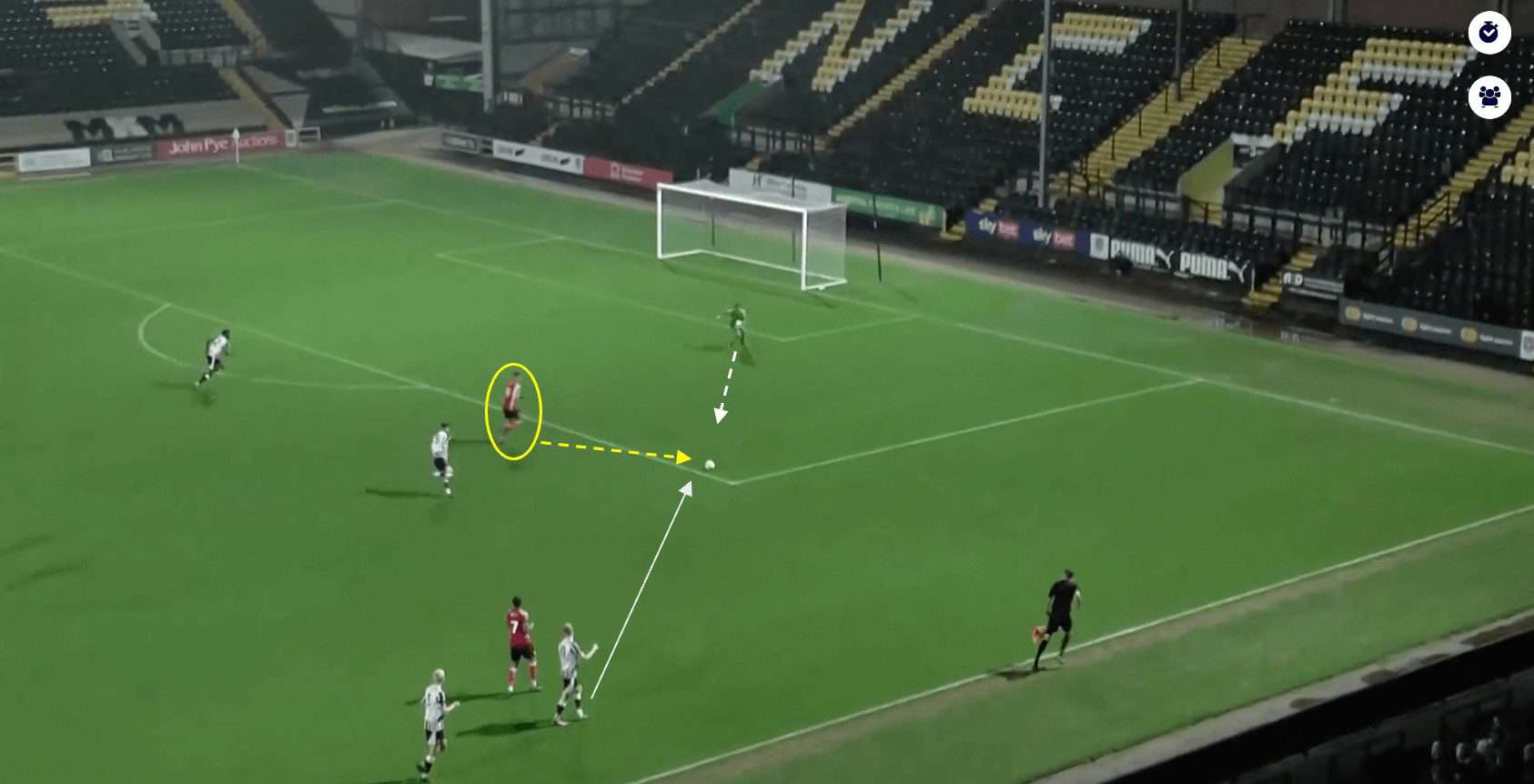
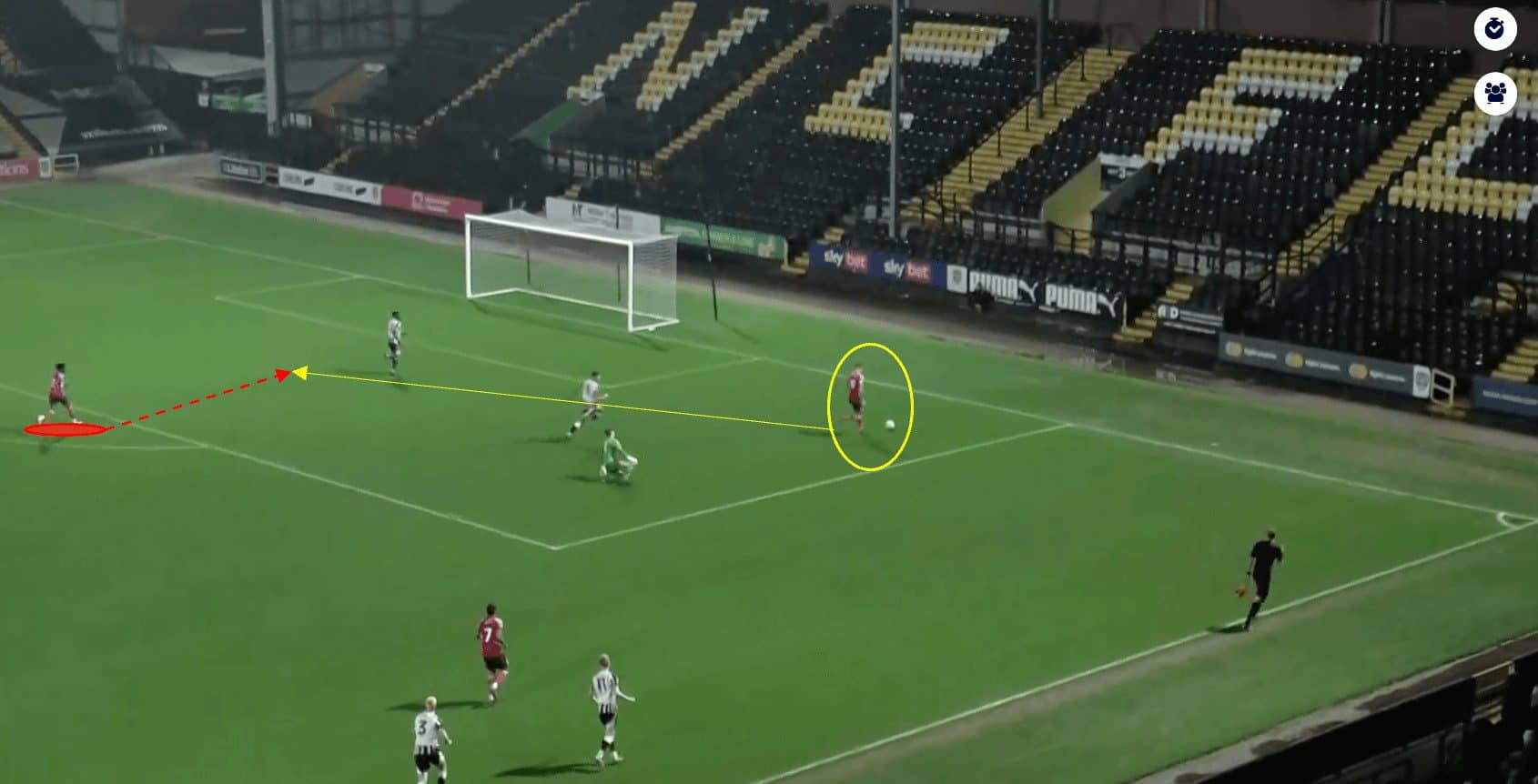
Additionally, Bailey Adamson is very active when his team is in the defensive phase.
He looks to lead from the front and works incredibly hard to press high up the pitch to force the opposition into errors.
Here, he springs into action to intercept a poor back pass from the opposition.
He utilises his acceleration to get there ahead of the goalkeeper and then makes an excellent decision to square the ball to his teammate, who promptly turns it goalwards.
He is more than happy to battle for possession, as he is currently averaging 1.2 ground duels per 90 and 3.3 aerial duels per 90.
Adamson’s physical profile lends itself to pressing high as he has the speed to close down spaces, as we can see.
Plus, he reads the game very well and understands how to close off passing lanes with his physical presence.
This makes it difficult for opponents to accurately play out from the back when the Lincoln front line initiates a press, led mainly by their 17-year-old forward.
Zane Okoro
The second player we are going to look at in this scout report is Zane Okoro.
He is a highly-rated forward who can play anywhere in the front line.
Okoro is a new signing for Lincoln, joining in the summer of 2023.
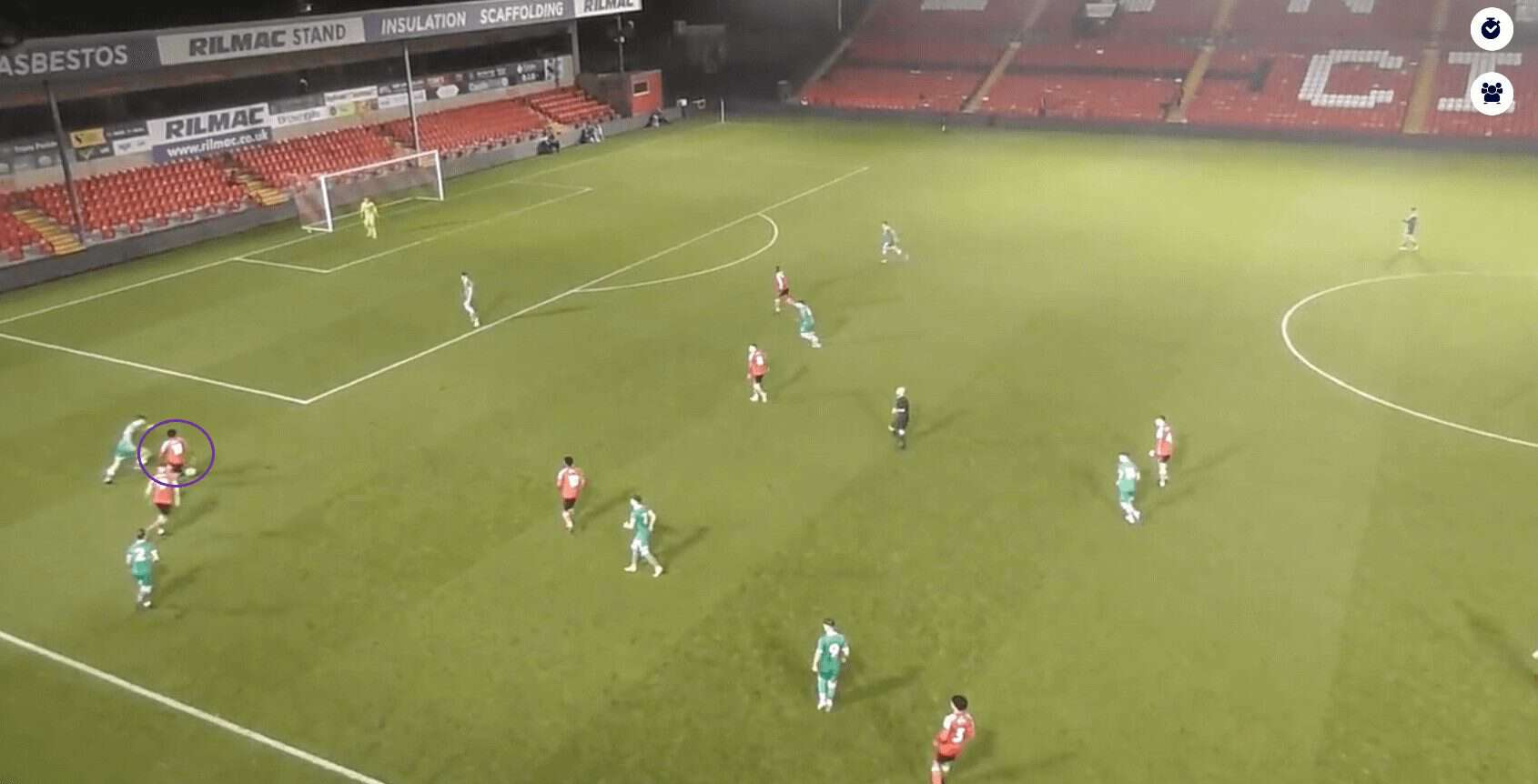
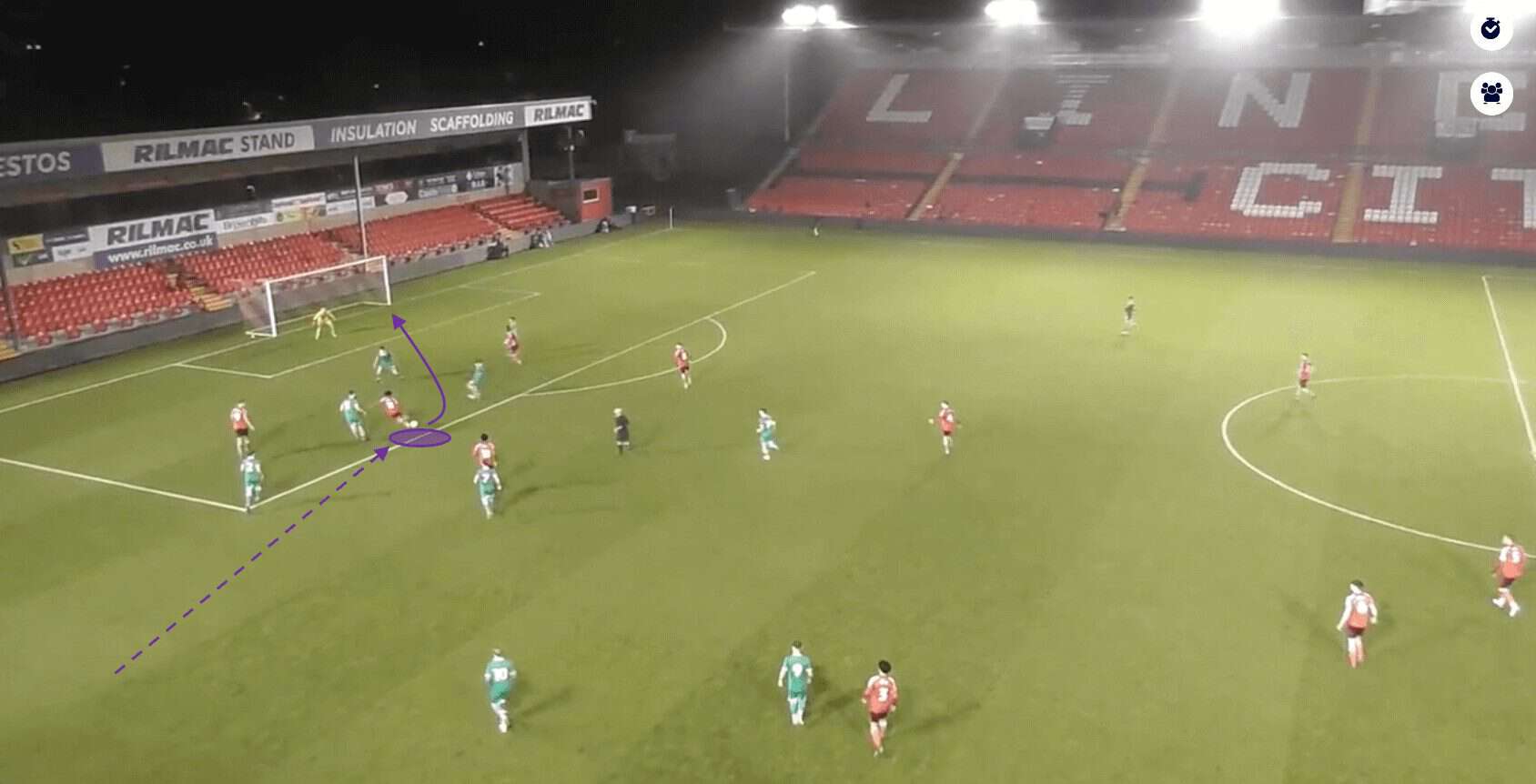
Okoro is an incredibly dynamic player; he can play as a centre forward or an out-and-out winger on the right.
However, the position he thrives in is cutting in from the left wing.
We can see in this example how he works hard to counterpress and regain possession high up the pitch for Lincoln City.
The dynamic attacker then utilises his dribbling ability and close control to carry the ball into the penalty area, taking on his opponent in the process.
He then places a well-struck curling effort into the bottom corner beyond the goalkeeper.
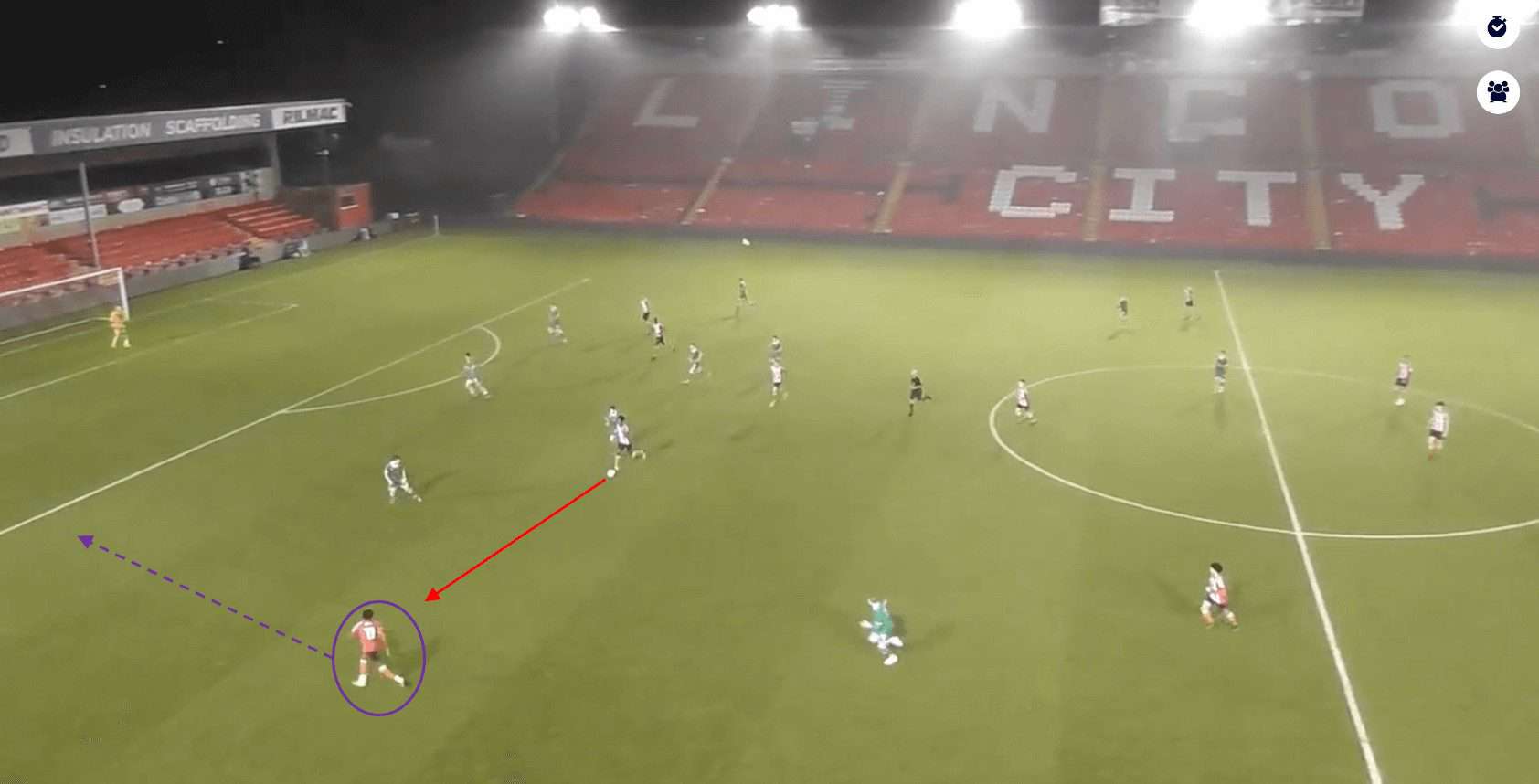
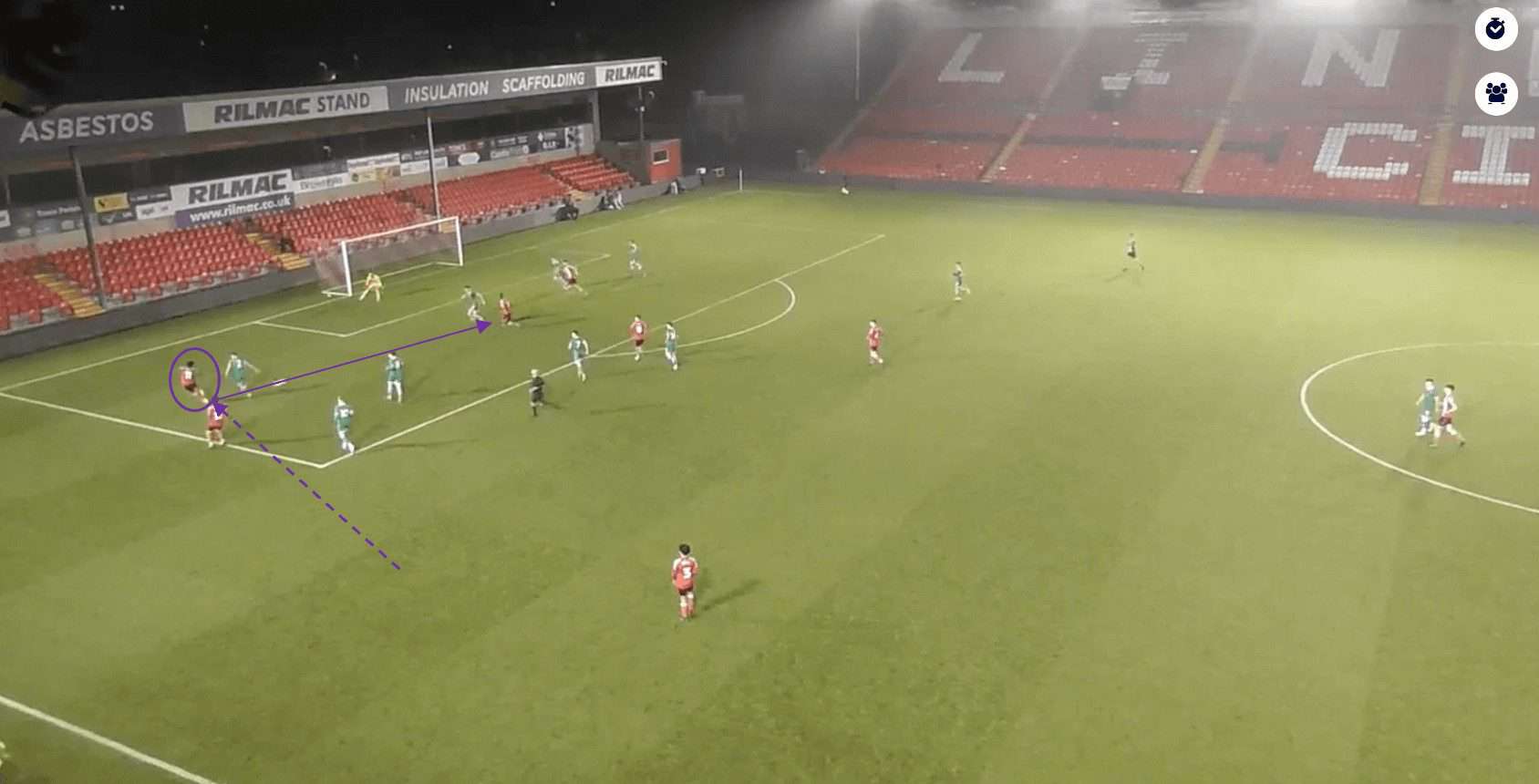
In this instance, Okoro takes on his opponent and carries the ball into the penalty area.
Rather than looking to cut in and execute a shot on goal, he uses his left foot to play a driven cross into the centre of the penalty area, where he has three Lincoln players to aim for.
Okoro’s dynamic playing style sees him execute 3.5 take-ons per 90.
By taking on his opponents with confidence and control, he can penetrate deep into the opponent’s defensive territory, forcing defensive players to commit and creating spaces for teammates.
This well-honed skill disrupts the opposition’s defensive structure and injects a sense of unpredictability into Lincoln’s attacking play.
Additionally, Okoro’s ability to get into excellent crossing positions is a very useful aspect of his repertoire.
He can confidently engage in direct duels and beat defenders with his acceleration and close control, which puts tremendous pressure on the opposition’s backline.
This plays a role in him being able to execute 1.84 crosses per 90, which, in turn, increases Lincoln’s likelihood of creating goal-scoring opportunities.
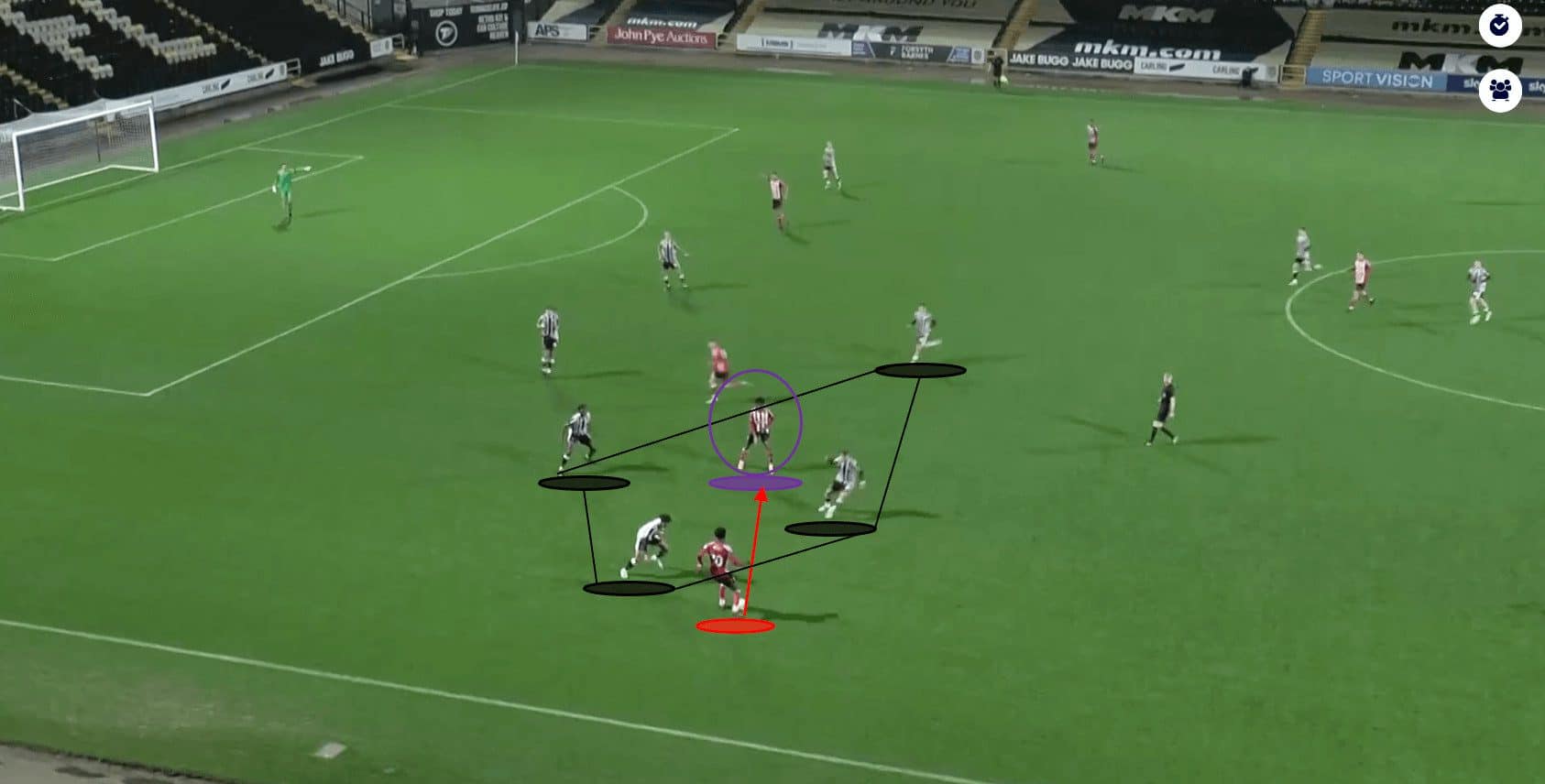
Moreover, the young forward is critical to Lincoln City Under 18’s build-up play as he has a wonderful ability to receive and control the ball whilst under pressure.
Okoro’s adeptness at receiving under pressure adds a layer of versatility to Lincoln City U18’s attacking strategy.
As we can see here, he can control the ball despite four opponents surrounding him, opening up possibilities for intricate link-up play with his teammates.
This dynamic interplay can cut through the opposition’s defensive lines and create opportunities for other attacking players to make purposeful runs into open spaces.
The Lincoln City U18 forward’s composure and technical proficiency allows his teammates to play the ball into his feet in tight spaces.
This goes a long way to providing a means for the team to retain possession and initiate attacking sequences.
Okoro’s ability to act as a secure link between defence and attack enables Lincoln to navigate the opposition’s defensive structures and progress up the pitch.
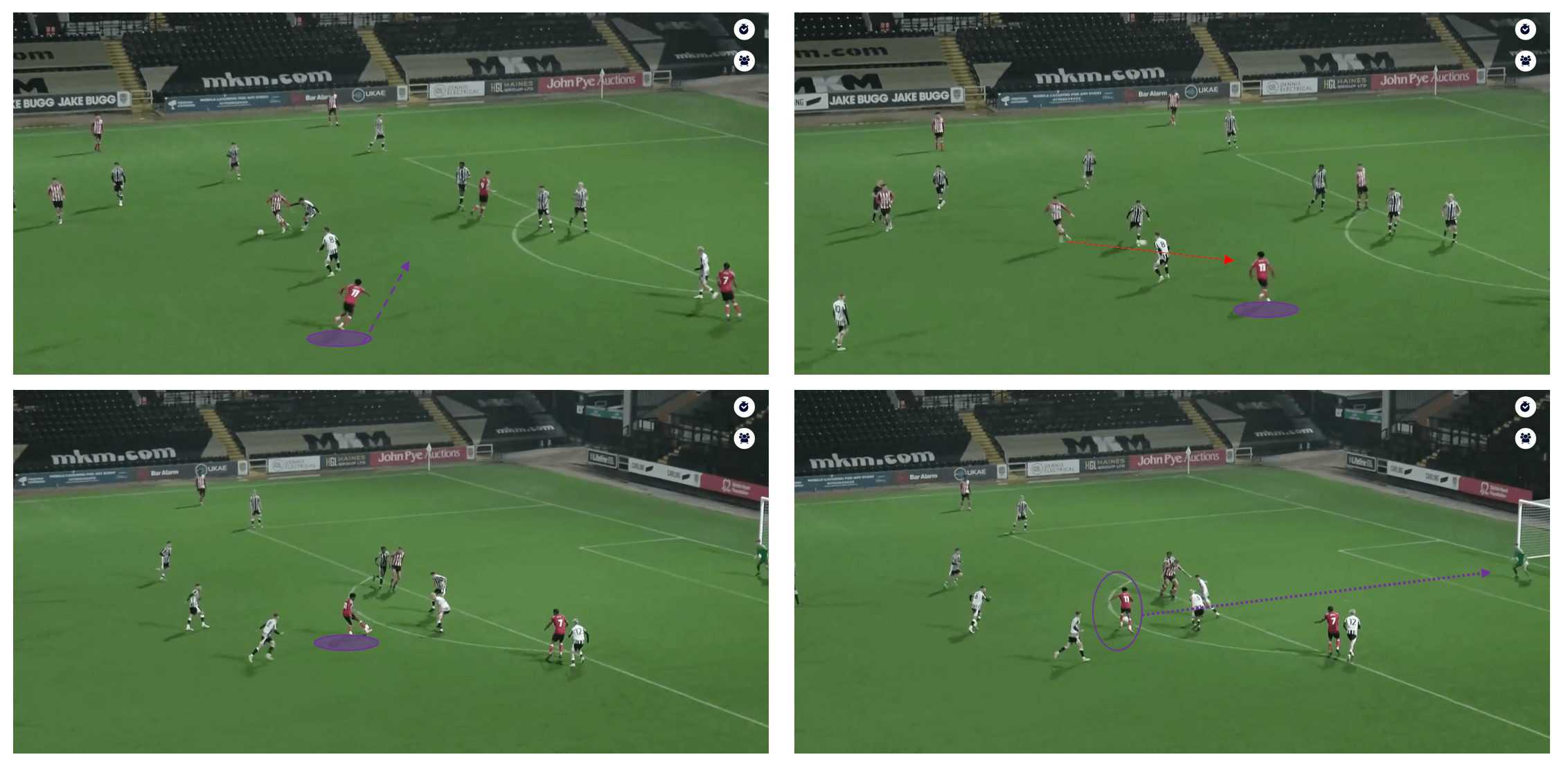
Furthermore, Zane Okoro is more than adept at operating in central areas, as we can see in this example.
He sees the open space and makes a good run into it, which means his teammate can play a short pass to Okoro’s feet.
The Lincoln City man then shifts the ball and hits a powerful shot with his left foot.
Earlier in this analysis, we saw that Okoro was shooting with his right foot; in truth, he is more than happy to use either foot, which is very useful for Lincoln City’s attacking capabilities.
Okoro’s two-footedness provides a multifaceted threat that keeps defenders on their toes and significantly impacts the dynamics of goal-scoring opportunities.
As we can see in the example above, the Notts County defenders do not get too close to him as they know he can shoot with his left foot or turn back and use his preferred right foot.
He looks to get into goal-scoring positions frequently as he executes 2.5 shots per 90.
Defenders accustomed to anticipating a player’s preferred foot may find predicting Okoro’s next move challenging.
This uncertainty makes it difficult for defenders to effectively close him down as they must be prepared for shots from either foot.
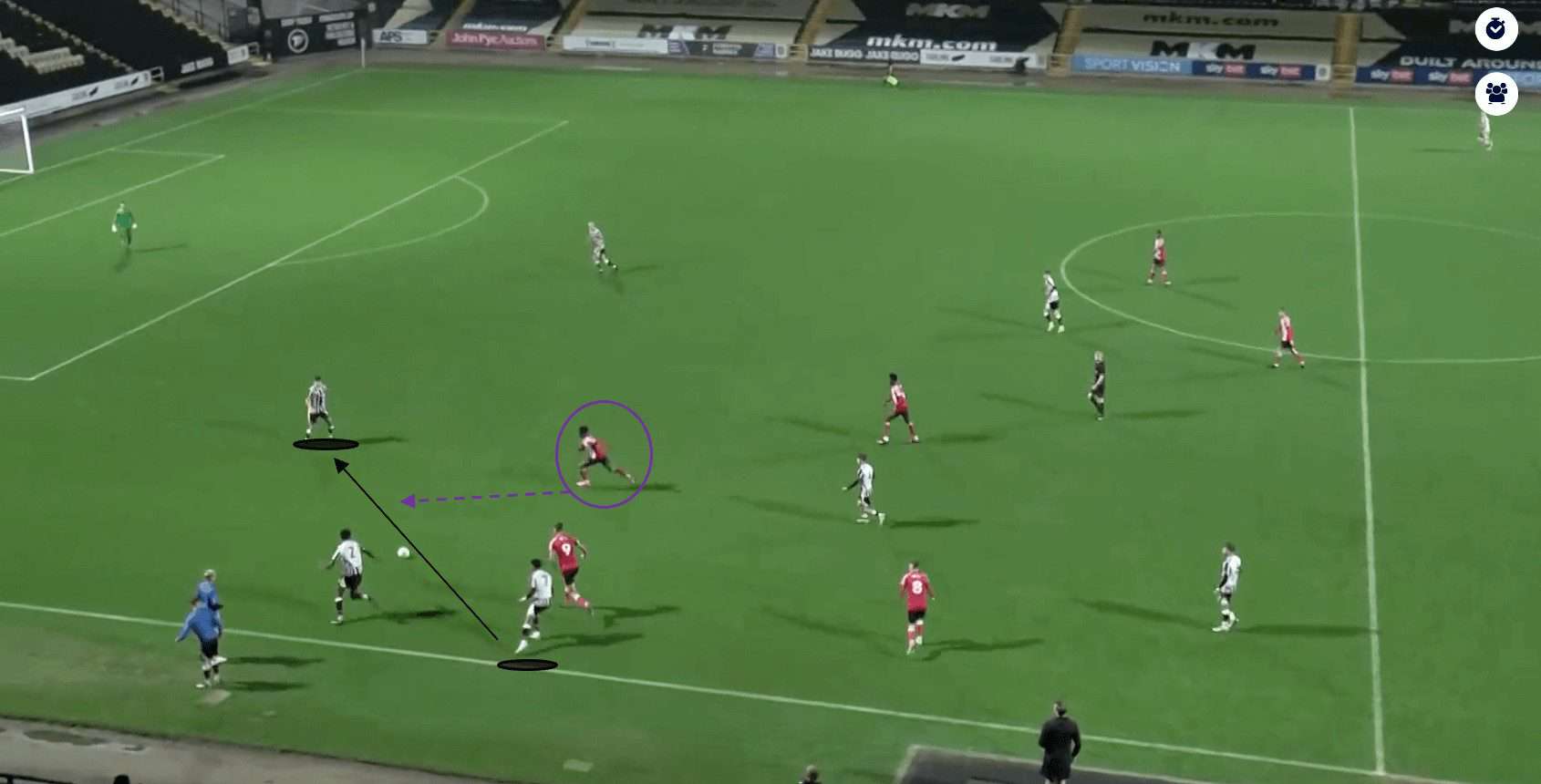
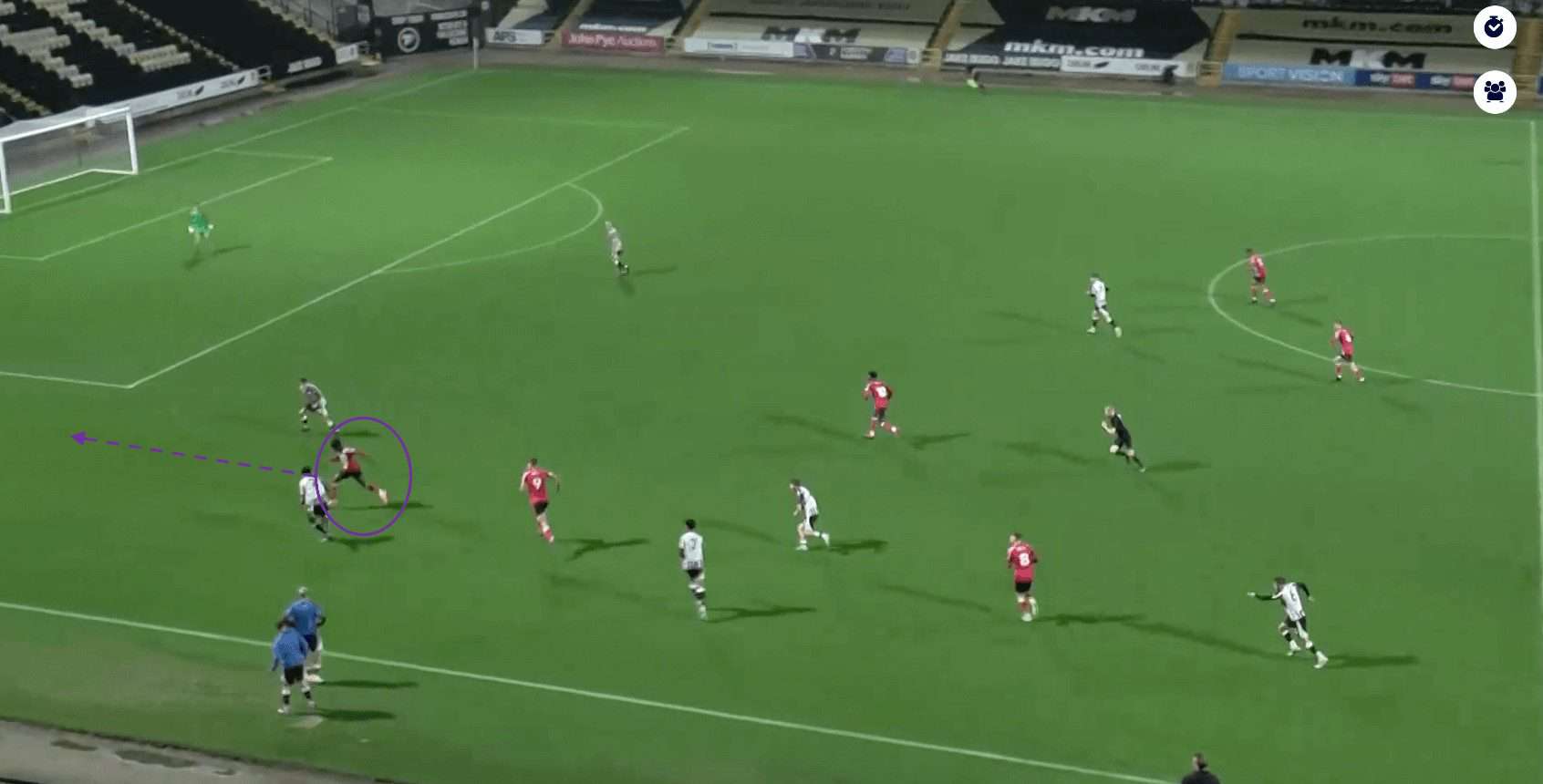
Like Bailey Adamson, Okoro is a player capable of playing in a high-pressing system.
As we can see here, he utilises his acceleration and reading of the game to make interceptions high up the pitch.
He sees where the opposition player aims his pass and ensures that he gets there first, then he puts on the afterburners and carries the ball at speed down the flank.
By applying pressure in the opponent’s defensive third, Okoro compels defenders to make quick decisions under duress, increasing their likelihood of making mistakes.
This aggressive pressing style creates turnovers in dangerous areas, disrupting the opposition’s rhythm and providing his team with immediate goal-scoring opportunities.
Moreover, Lincoln U18’s high pressing serves as the first line of defence, preventing the opposition from establishing a controlled passing game from the back.
The continuous interceptions of passes by the young forward force the opponents into hurried, imprecise decisions, limiting their ability to orchestrate cohesive attacking moves.
Okoro can use his speed to close down opponents rapidly, increasing pressure on them.
Coupled with his good positioning to close off passing lanes, it can lead to many turnovers high up the pitch.
Conclusion
As Lincoln City look to bring in young players via the transfer market, in this scout report, we have highlighted two young attackers who they can promote from their own youth system.
Bailey Adamson is a classic number nine with an eye for goal and an excellent ability to link up with his teammates.
Meanwhile, Zane Okoro offers dynamism and unpredictability, which means he is a constant threat going forward.
The two players in this tactical analysis piece have the potential to become key players for The Imps.
They are talented youngsters who could soon step up to the first team and lead the Lincoln City attack.





Comments